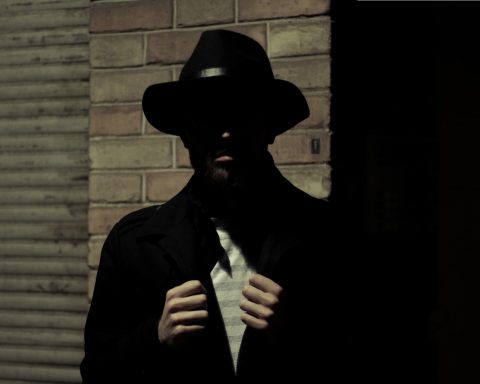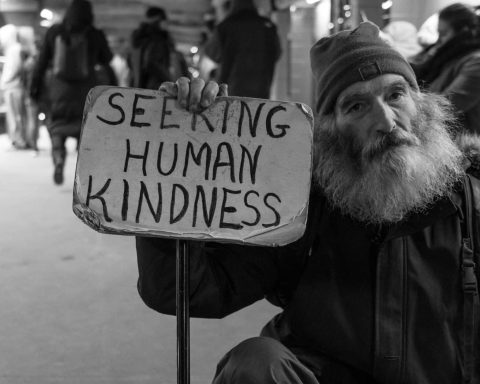 Giles Hazan is a GPwER in Chronic Pain, working in the South East of England.
Giles Hazan is a GPwER in Chronic Pain, working in the South East of England.
Iwoke to find myself stuck somewhere between sleeping and waking, a liminal zone, a threshold between dream and reality.
As I drifted in and out of consciousness my dreams came with me, events and people on the ward merged into a hallucinogenic thriller my confused mind had created. A mystery, where events in the present affected not only the future but also the past. With hindsight, my choice of watching the film ‘Tenet’, with its themes of time travel and a race to avert international disaster the night before going in for brain surgery may not have been ideal.
Earlier that year I had been diagnosed with a pituitary adenoma and, after careful discussion with my team of endocrinologists and neurosurgeons, decided to have surgery to remove it. Working as a doctor for nearly 20 years, latterly mostly in chronic pain clinics, allowed a degree of professional detachment, a coping mechanism perhaps common to doctors as patients.
Generally considered a safe surgery, I expected to be in hospital for less than a week and discussion with the anaesthetist has reassured me that I would likely only need simple analgesia after the first few days. Of course, I should have considered the additional ‘risk magnifier’ for medical personnel. Based on personal experience, this suggests that if anything can go wrong with a procedure it generally will if the patient is a member of the medical profession.
Sure enough, during surgery I had the rare complication of a CSF leak and then, to add insult to injury, developed an even rarer and aggressive ‘Ventriculitis’, (no, I hadn’t heard of it before either) an infection like meningitis but more focussed within the ventricles in the brain. This caused headache, confusion, photophobia and a fever with rigors which came on just as they were attempting to remove my lumbar CSF drain, which was a tad inconvenient.
I admitted defeat, welcoming the opioids with open arms.
To my embarrassment now, I remember as the pain built, I considered my experience of managing chronic pain in the community. I practiced breathing exercises and even remember reaching for my phone to play a meditation before the onset of rigors meant I couldn’t press the buttons and I admitted defeat, welcoming the opioids with open arms.
I don’t honestly remember much of the next 48hrs, my conscious level fluctuated as the antibiotic equivalent of Domestos was poured into my veins to battle the infection. I subsequently rallied enough to emerge into the psychedelic combination of opiate effects plus infection, including delirium, hallucinations, sedation and mood swings that were played out in a screenplay that would have done Christopher Nolan proud.1,2,3
As the antibiotics continued to do their work, I was able to start to cut down the doses of opiates using more of an ‘as required’ approach and once again reacquaint myself with reality. It was during this phase, shortly after a chunky top up of oxycodone, that I experienced my next opiate effect. Lying in my hospital bed, the pain fading and drifting towards sleep I was filled with an overwhelming sense of wellbeing, finally all was well with the world and the next few hours were spent in a state of near total bliss.
This may well have been because I was feeling better but, writing this now, I recognise in that afternoon a near perfect example of opiate induced euphoria. How wonderful it was to be out of such an awful pain and how scary it was to consider it returning. This creates the perfect pharmacological carrot and stick of motivation to continue to use opioids and I now realise how easy it would be to reach again for that release. It is no surprise to me that up to 6.5% of surgical patients end up becoming long term users of opiates.4
40% [of GPs] reported mental health problems including depression, anxiety, bipolar disorder, or post-traumatic stress disorder.
Critically we also have privileged access to a supply of controlled drugs. It is sobering to note that primary care doctors are the most common source of opioids for non-medical users.8 But perhaps this access to drugs accounts for why both GPs and anaesthetists top the list of ‘high risk’ specialities likely to develop an addiction.
We must … discuss … all of the effects including the euphoria and the more psychedelic effects that may … increase risks of subsequent dependence.9,10
When it comes to surgery, informing people about the potential side effects before they need opioids as part of a pre-op process, as well as guidance about reducing and stopping them after any procedure, is vital. Early identification of risk factors such as negative pain appraisal, catastrophisation, anxiety and depression and the use of interventions to equip patients with self-management skills can reduce post-operative use of such potentially dangerous medications, and ultimately avoid the drift into dependence and addiction.11
My experience in this opiate induced liminal zone has enabled me to reflect on the threshold I crossed between doctor and patient. It has provided a valuable insight into the impact of the powerful drugs that we use to manage pain and has been a humbling experience that has emphasised my own fallibility and vulnerability, not just despite, but perhaps because of, being a doctor.
References
- Parker, C., 2020. Adverse psychiatric effects of drugs for other disorders. Medicine.
- Ishankulova, M.B., 2020. How psychotropic substances affect a human’s brain. In Неделя молодежной науки-2020 (pp. 388-389).
- Laher, A.E., Etlouba, Y., Moolla, M., Motara, F. and Ariefdien, N., 2018. First-presentation with psychotic behavior to the Emergency Department: Meningitis or not, that is the question. The American journal of emergency medicine, 36(11), pp.2068-2075.
- Darnall, B.D., Ziadni, M.S., Krishnamurthy, P., Flood, P., Heathcote, L.C., Mackey, I.G., Taub, C.J. and Wheeler, A., 2019. “My surgical success”: effect of a digital behavioral pain medicine intervention on time to opioid cessation after breast cancer surgery—a pilot randomized controlled clinical trial. Pain Medicine, 20(11), pp.2228-2237.
- Berge, K.H., Seppala, M.D. and Schipper, A.M., 2009, July. Chemical dependency and the physician. In Mayo Clinic Proceedings (Vol. 84, No. 7, pp. 625-631). Elsevier.
- Imo, U.O., 2017. Burnout and psychiatric morbidity among doctors in the UK: a systematic literature review of prevalence and associated factors. BJPsych bulletin, 41(4), pp.197-204
- Domino, K.B., Hornbein, T.F., Polissar, N.L., Renner, G., Johnson, J., Alberti, S. and Hankes, L., 2005. Risk factors for relapse in health care professionals with substance use disorders. Jama, 293(12), pp.1453-1460
- Bartels, K., Binswanger, I.A. and Hopfer, C.J., 2016. Sources of Prescription Opioids for Non-Medical Use. Journal of addiction medicine, 10(2), p.132.
- Talbott, G.D., Gallegos, K.V., Wilson, P.O. and Porter, T.L., 1987. The Medical Association of Georgia’s Impaired Physicians Program: review of the first 1000 physicians: analysis of specialty. Jama, 257(21), pp.2927-2930
- Hughes, P.H., Baldwin, D.C., Sheehan, D.V., Conard, S. and Storr, C.L., 1992. Resident physician substance use, by specialty. American Journal of Psychiatry, 149, pp.1348-1348
- Darnall, B.D., Ziadni, M.S., Krishnamurthy, P., Flood, P., Heathcote, L.C., Mackey, I.G., Taub, C.J. and Wheeler, A., 2019. “My surgical success”: effect of a digital behavioral pain medicine intervention on time to opioid cessation after breast cancer surgery—a pilot randomized controlled clinical trial. Pain Medicine, 20(11), pp.2228-2237.
Feautured image by Johannes Plenio at Unsplash







Thank you, Giles, for this frank, honest and fascinating description. I share some of your experiences, both as a GP working in the Pain Service, and as a post-surgical patient experiencing opioid effects. Your description of the euphoria chimes with my experience, following radical abdominal and pelvic surgery for bowel and liver cancer. I recall sinking in and out of walls of pure colour, understanding that these were both inviting and dangerous.
One evening, in HDU, I heard a rock & roll band playing a song I didn’t know, directly below the window beside me. I could have transcribed the chords and the words to play the song myself, had I had the fitness and equipment. It was, of course, an auditory hallucination, but it took a lot for the nurse to convince me of that!
Later, after one of my inevitable ‘risk magnifier’ induced complications, surgical drains were inserted under X-ray guidance, to relieve a series of abscesses. One of these, though caused so much pain with every breath that even the IV morphine couldn’t control it. After several excruciating and frightening hours, the on-call anaesthetist was brought in. In my morphine-generated haze, as the door entered to admit her, I clearly saw – not a doctor – but an angel bathed in a halo of light, and somehow knew everything would be alright. She turned out to be one of my colleagues in the pain service, and she efficiently established a ketamine infusion that brought about. I’ve never been more grateful. I’m not sure whether my subsequent euphoria owed its existence to the morphine, the ketamine, the pain relief itself or the angelic vision – probably a complex combination.
Like you, Giles, my subsequent reflection included recollection and understanding of my vulnerability, and also a greater ability to understand some of what our patients experience. In my subequent work with the International Association for the Study Pain, I co-chair their Global Alliance of Partners for Pain Advocacy (GAPPA), an organization co-created by patients and pain professionals. One of our clear statements is, “There is no them and us, only us.”
Best wishes for your recovery and future health.